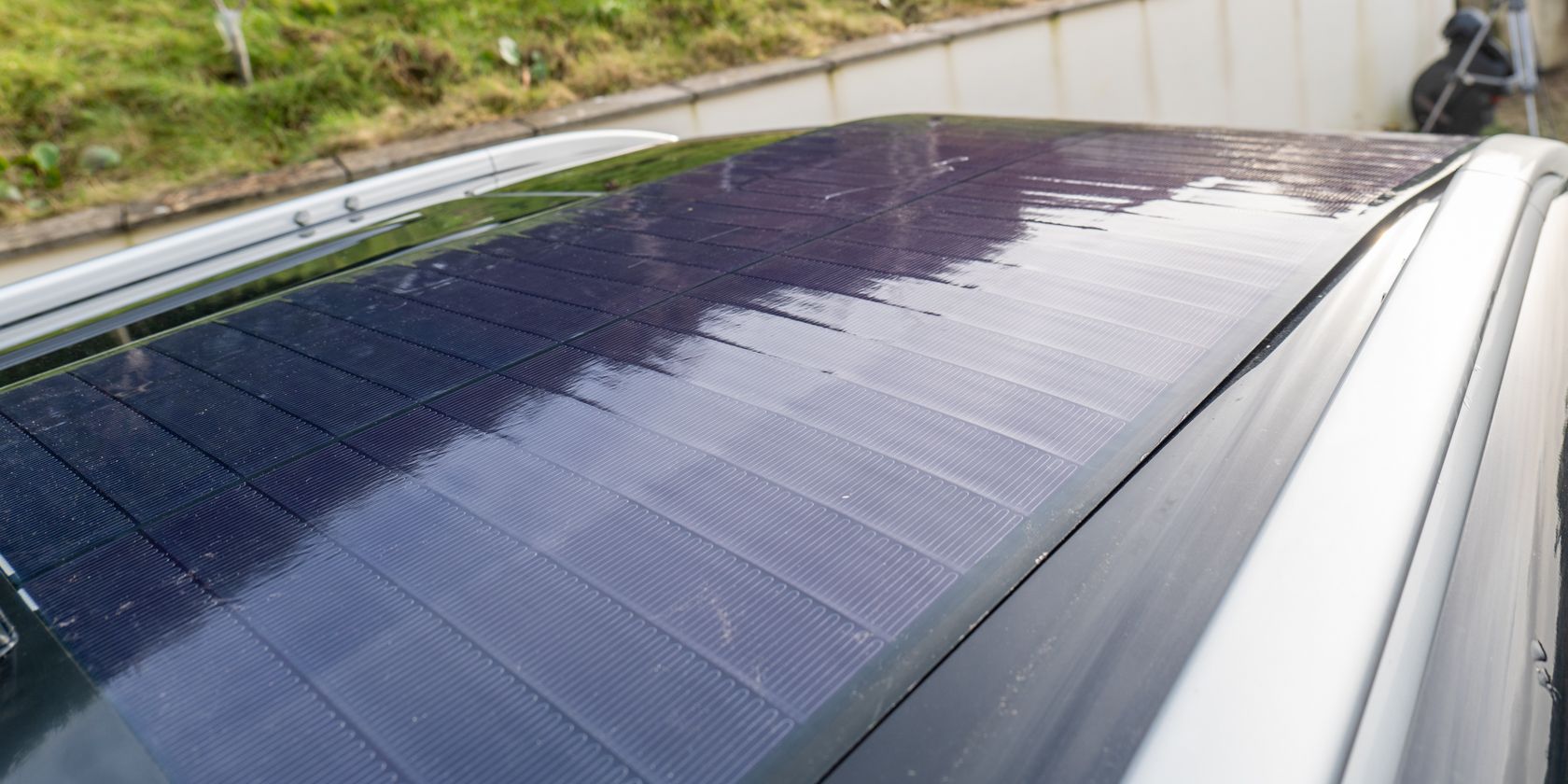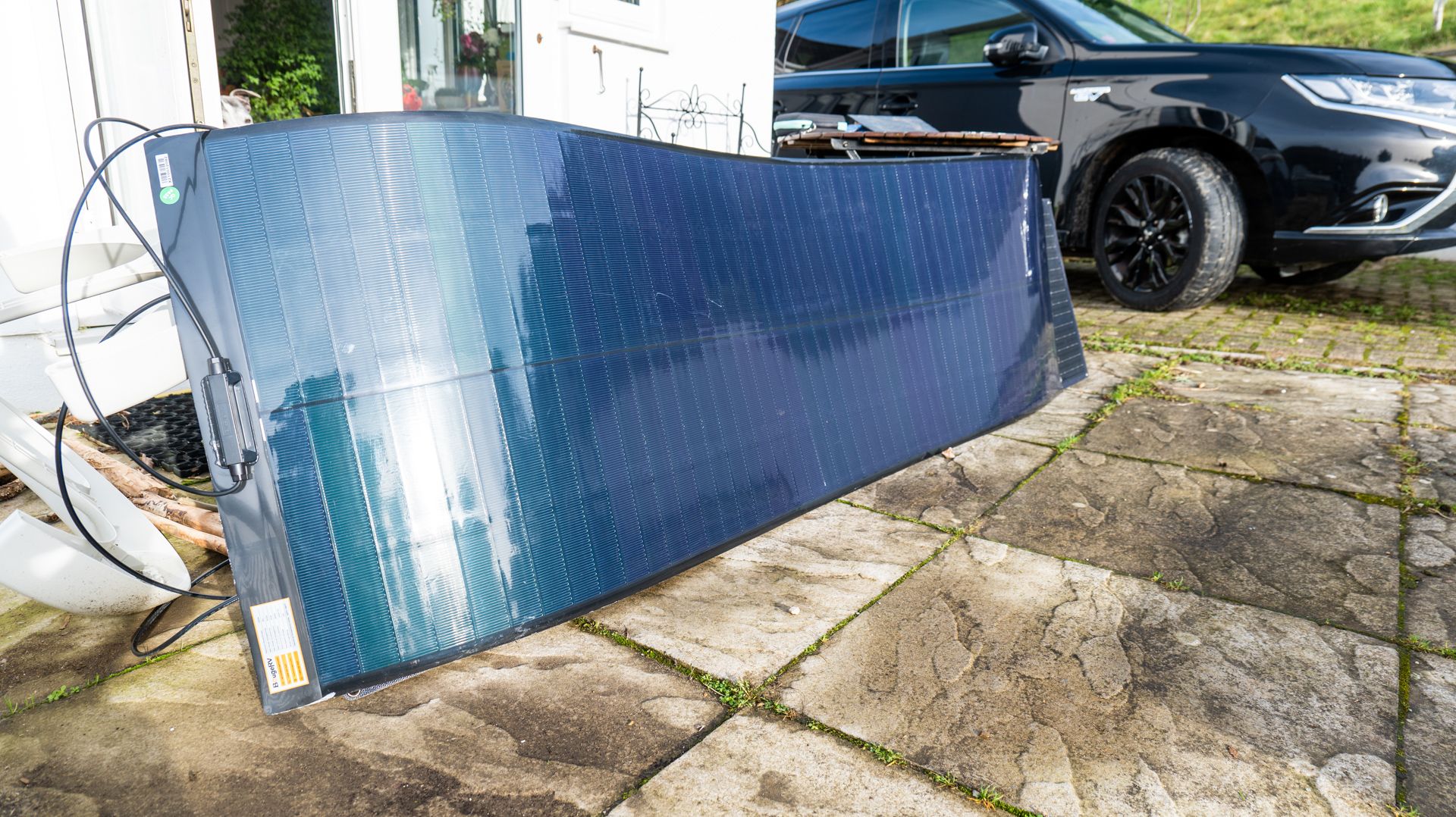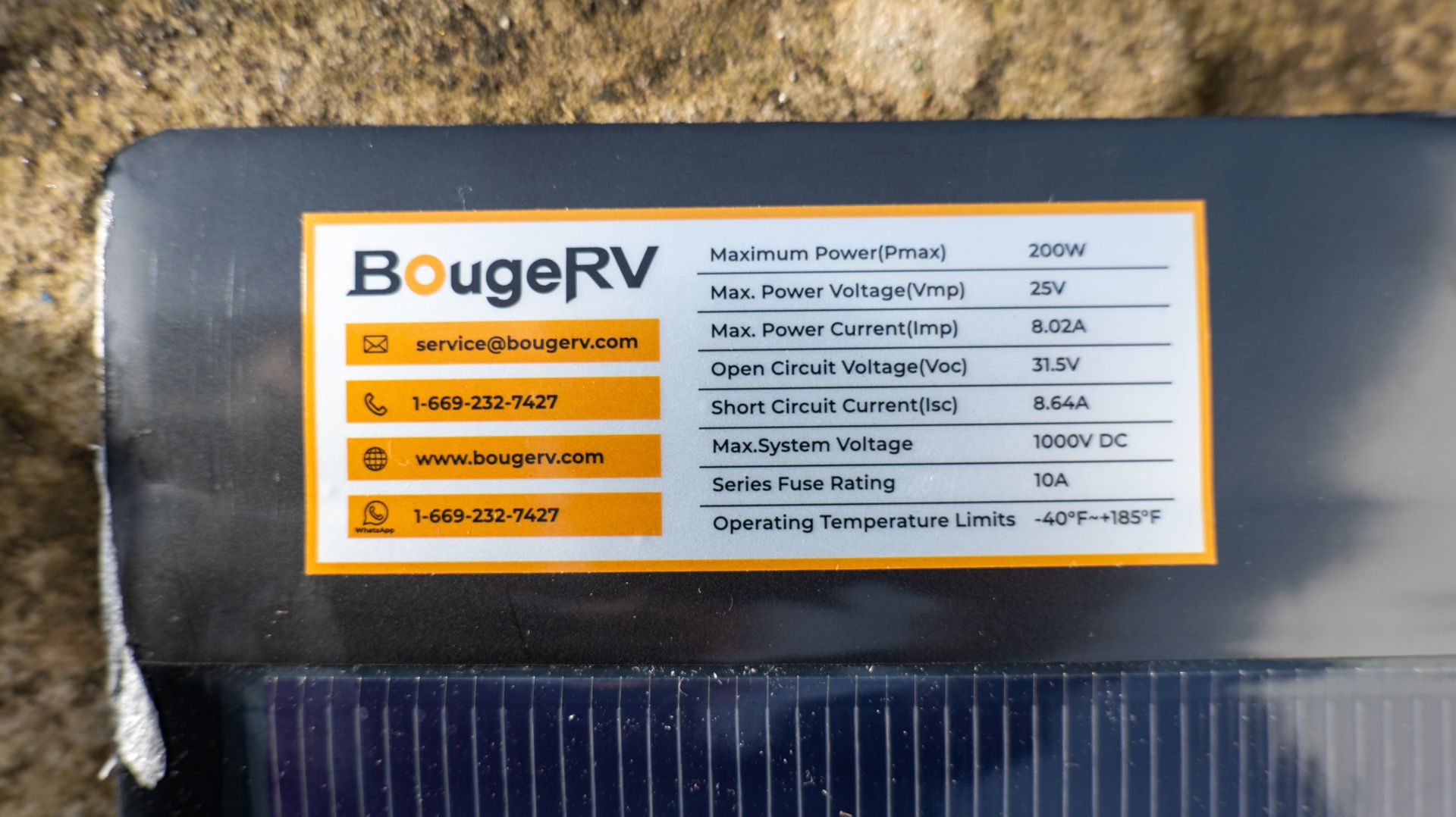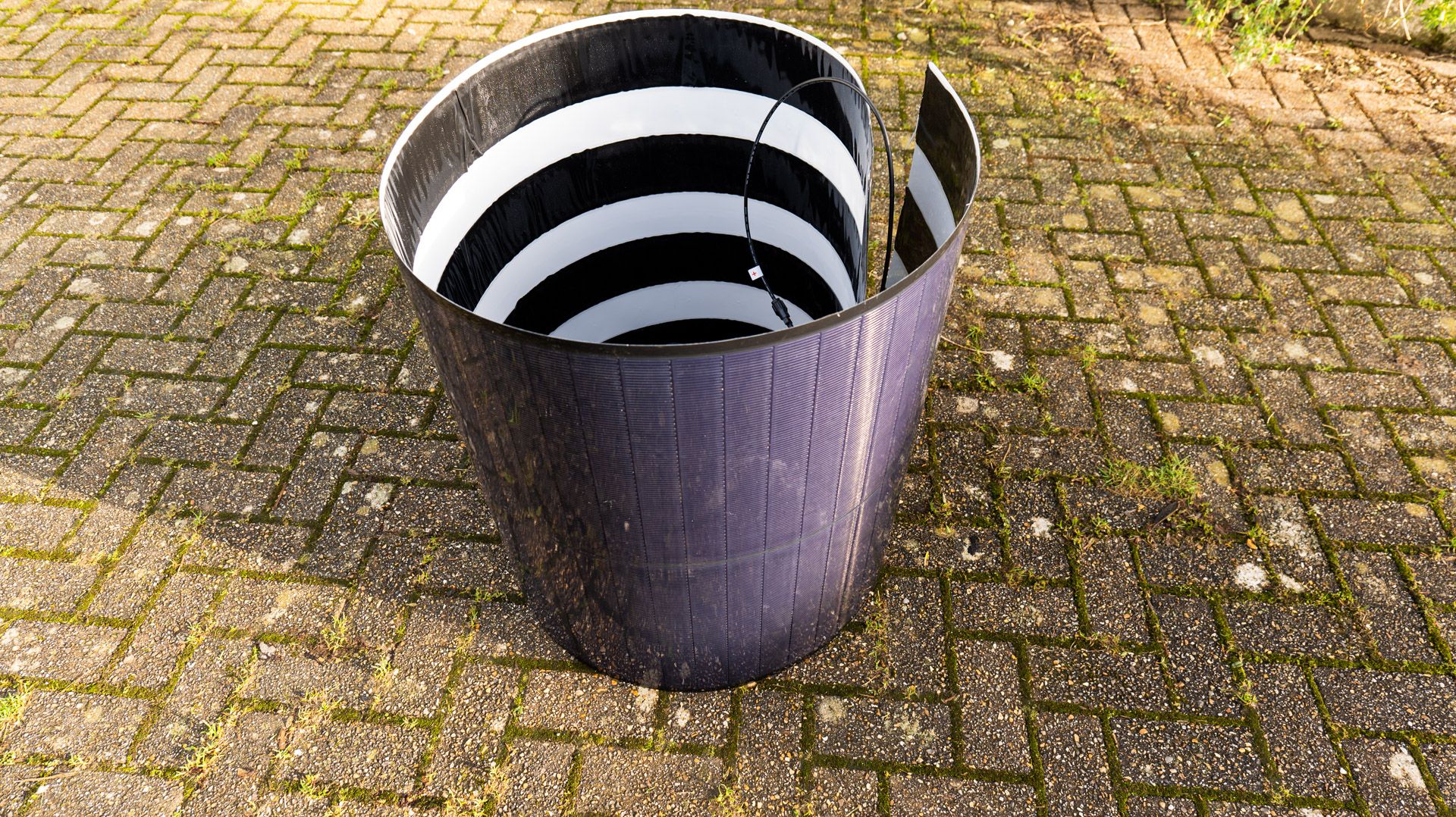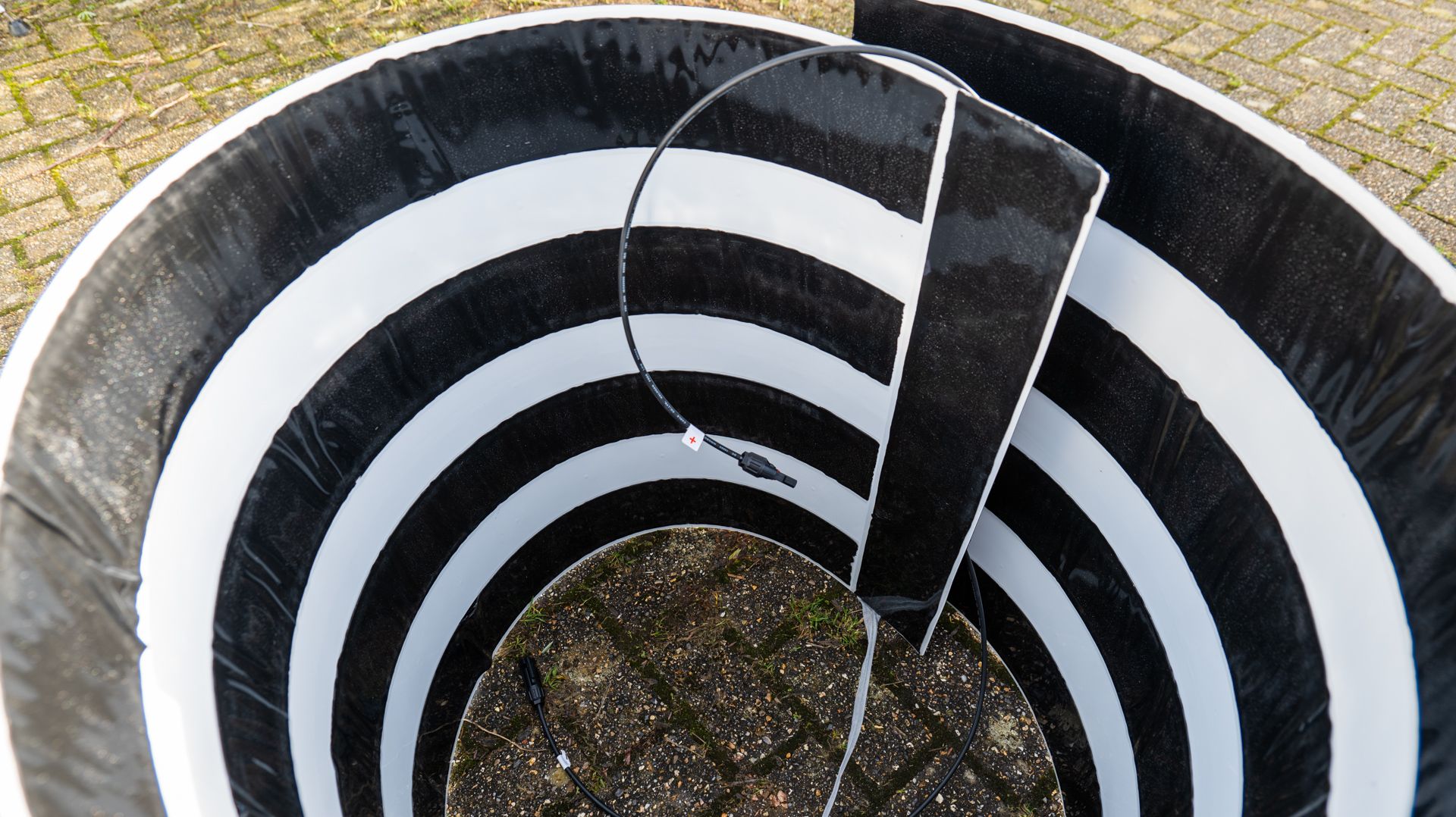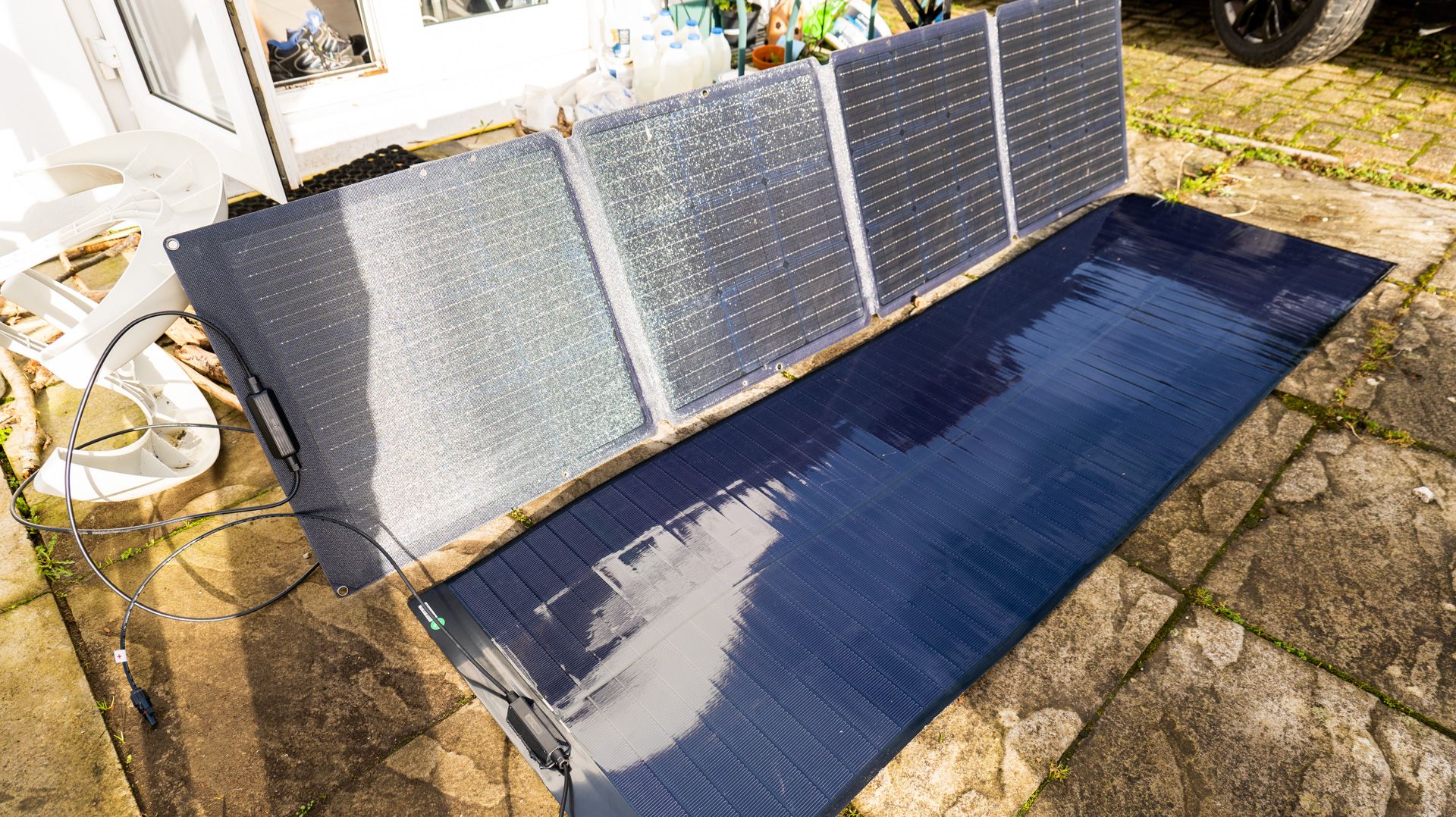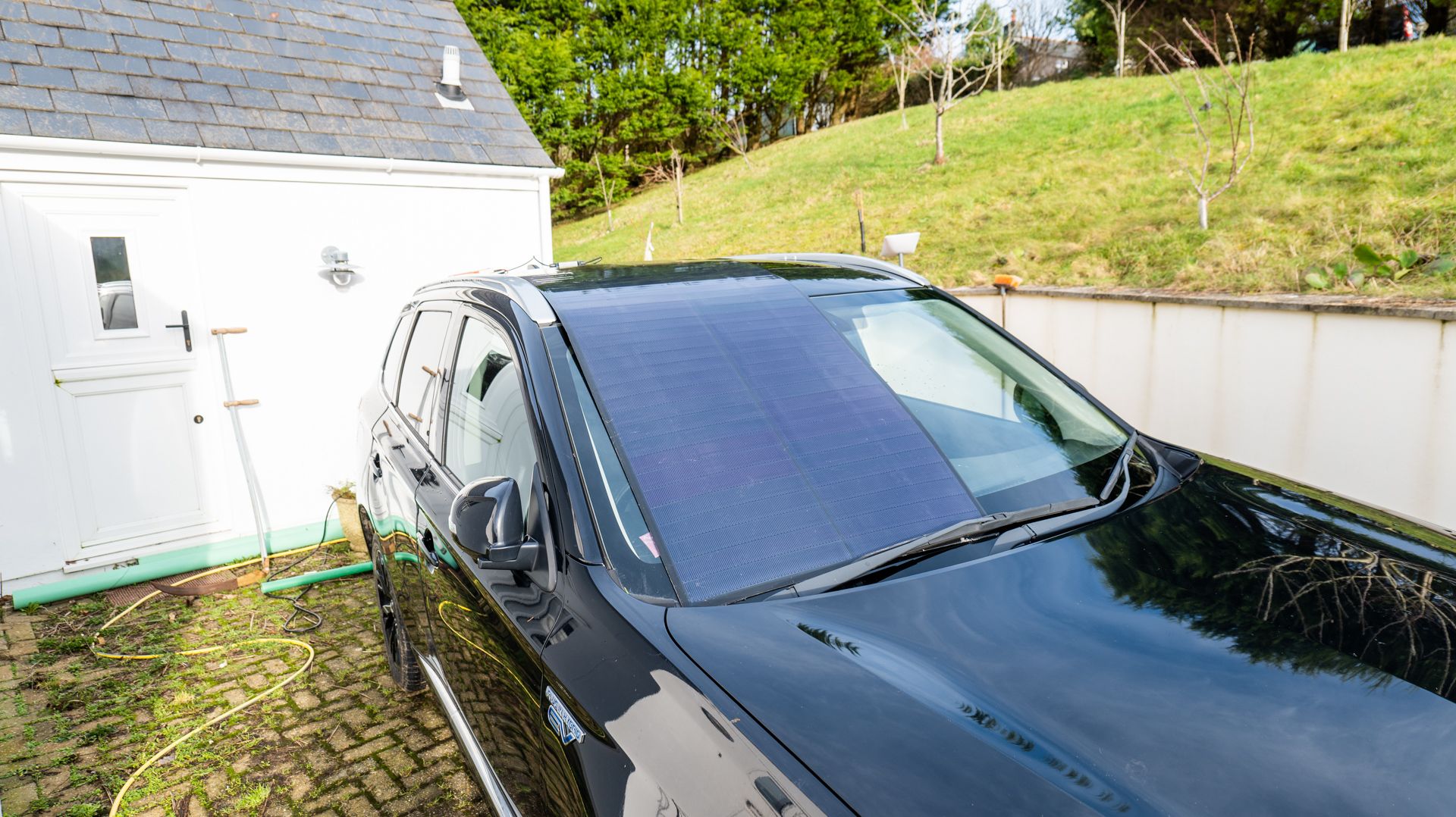BougeRV Yuma 200W Flexible Panel
If you have a large enough surface—even if it curves heavily—you could easily fit a BougeRV flexible panel to it. For caravans, motorhomes, or boats, the benefits of lightweight solar generation are obvious.
I found the performance of the BougeRV 200W panel in low light to be fantastic, making it ideal for year-round permanent installs where cheaper rigid panels aren't an option.
- Brand: BougeRV
- Type: CIGS Flexible
- Power: 200W
- Voltage: 25V
- Size: 66 x 217 x 0.15cm (26 x 85.6 x 0.06 inches)
- Weight: 3.2kg (7.05lbs)
- Ingress Protection Rating: Fully waterproof (designed for permanent outdoor installation)
- Price per Watt: $2.90
- Maximum Current: 8.02A
- Connector Type: MC4
- Efficiency: 16%
- Operating Temperature: -40℉ ~ +185℉
- VOC: 31.5V
- Conforms to curved surfaces
- Thin and lightweight, so the impact on fuel consumption is minimal
- Exceptional performance in low light compared to monocrystalline panels
- Requires a large surface area
- Pricey compared to static panels
If you own an RV or campervan, you've probably considered putting solar panels on the roof at some point. But rigid panels require mounting holes to be drilled, they're heavy, can create drag when driving, and the trade-off might not be worth it for the extra fuel you'll need to burn by carrying them. Thankfully, there's an alternative: flexible, lightweight, thin panels.
BougeRV offers thin-film flexible CIGS solar panels in 100W or 200W versions, and today we'll be taking a closer look at the "Yuma" 200W panel to see if it's worth investing in for your travel power needs.
What is a CIGS Panel?
Unlike rigid solar panels, which use crystalline silicone, CIGS thin-film flexible panels are built around a chemical amalgam of copper (C), indium (I), and gallium (G) on a substrate, which is annealed using (S) diselenide vapor. The resulting panels are thin, flexible, and lightweight.
CIGS panels generally have a lower efficiency than rigid solar panels (BougeRV states 16% for the Yuma 200W panel, compared to a typical 20% for rigid panels).
They're also more expensive. The BougeRV 200W flexible panel currently retails at $580 (though at the time of writing, you can take 15% off with the code NY15). I could source two 400W rigid panels locally for that price and still have change. So there's a definite premium involved. That's roughly the same 4X premium as buying portable folding panels, so that's what I'll be comparing against.
Design and Specifications
Measuring 66 x 217 x 0.15cm (26 x 85.6 x 0.06 inches) and weighing 3.2kg (7.05lbs), the BougeRV flexible panel arrives rolled up. Unlike rigid panels, delivery is easy and won't require a pallet truck.
There are two versions of the Yuma flexible panels; one with mounting holes along the edge, and one with high-temperature adhesive strips already applied. We were sent the latter, designed to be permanently affixed to any smooth surface.
Another consideration is the cabling. It's fitted with standard MC4 connectors, but if you don't already a cable inlet for your RV, you may need to drill one. You'll find suitable cable entry glands available for under $20 on the BougeRV site if you need to include one in your order, but it isn't included in the package, and the cabling provided is relatively short, too.
With an Open-Circuit Voltage (Voc) of 31.5V, the BougeRV Yuma should be compatible with most portable batteries, which typically accept 16-60V input. However, you should check the specs of your battery to confirm before purchasing. 200W would be too high for most batteries under 500Wh capacity.
You'll also need to provide your adaptor cables to feed the power from the BougeRV into whatever controller or battery system you're using. I tested with a dedicated solar test meter, as well as charging a Bluetti EB100 (1000Wh) battery via a 9mm DC plug.
Of course, as something designed to be fixed to your roof, the Yuma 200W panel is completely waterproof, but it's also tolerant of higher temperatures with less efficiency loss than rigid panels under the same conditions. In the past, flexible panels tended to have a shorter lifespan, but for this latest generation of flexible CIGS panel, BougeRV claims the Yuma 200W should be roughly the same as rigid panels, at around 20 years. They're incredibly durable.
Performance Testing and Comparison to Folding Panels
If you're looking to take something camping with you on a road trip, you might have ruled out mounting rigid panels to the roof. But now you have the choice of sticking down a flexible panel on your RV roof, or perhaps buying a portable panel which can be unfolded when you've stopped. It's a difficult decision because the size-to-weight ratios are roughly similar—as are the costs. So which is better?
So to help make that decision, I've pitted the 200W BougeRV flexible panel against a 200W Zendure portable panel. Both are roughly the same length when unfolded, though the BougeRV is slightly taller. The Zendure panel currently retails at $550 (compared to $580), so the price difference is negligible.
To test under ideal like-for-like conditions, I angled the Zendure toward the sun, and measured the output. On a somewhat clear British winter's day, I measured 85W from the 200W Zendure.
Laying the BougeRV on top of the Zendure to replicate the same angle, it produced 157W—almost double! I didn't notice any significant change in cloud cover between the two tests. Even accounting for the age of the folding panel, the BougeRV performed much better in low luminance.
Repeating the test with some heavier cloud cover, the BougeRV output went down to 40W, while the Zendure voltage was too low to produce a reading. The BougeRV flexible panel definitely performed better than the folding panel in these winter test conditions. BougeRV claims its panel can produce 38% more power over the course of an 8-hour cloudy day compared to monocrystalline panels, and that lines up with my testing.
Of course, testing at an ideal angle to the sun is a little unfair. Solar panels work optimally when facing the sun, not at an incidental angle. The main selling point of portable panels is that they're easy to move around and reposition throughout the day. You can always ensure a relatively good output if you take the time to micromanage them. But once you've permanently affixed the BougeRV flexible panel to your RV or caravan, you'll be at the mercy of whatever angle you parked at. If it's laying flat on the roof, they'll perform best when the sun is high in summer, and worse in winter when the sun is low (even if it's a clear day).
While I don't have an RV to attach this to permanently, I emulated the effect by laying it against the rounded contour of my car. This also served to demonstrate how well it can match the curve.
The front of the windscreen was directly facing the sun. Under these conditions–where half of the panel is direct to the sun, and the only is flat on the roof at a more indirect angle—it performed slightly worse than the perfectly angled portable Zendure panel (50W vs. 45W). Still, that's not bad at all.
This should also be balanced against the all-day nature of having this permanently on your RV. Even if you're driving, when your portable panel is packed up in the boot, the BougeRV flexible panel will generate something. Long road trips driving through the daytime could mean a full battery by the time you reach your next destination. It's also much less effort than folding and unfolding a portable panel.
Should You Buy the BougeRV Yuma 200W CIGS Flexible Panel?
The adaptive and lightweight nature of flexible CIGS panels means they're already making their way into new architecture projects and vehicles, but you can benefit now with one or more of the BougeRV panels. If you have a large enough surface—even if it curves heavily—you could easily fit a BougeRV flexible panel to it. For caravans, motorhomes, or boats, the benefits of lightweight solar generation are obvious.
I found the performance of the BougeRV 200W panel in low light to be fantastic, making it ideal for year-round permanent installs where cheaper rigid panels aren't an option.
Of course, there's no reason you can't combine a portable panel with a flexible one, too. Either use one or the other depending on the conditions. Or if you find one with the same current (amps) output, wire them in parallel using MC4 Y-splitters to the same controller. Even when one is shaded, the output will be combined.

